Experimental therapeutic assays of Tephrosia vogelii against Leishmania major infection in murine model: in vitro and in vivo
- PMID: 29208030
- PMCID: PMC5718069
- DOI: 10.1186/s13104-017-3022-x
Experimental therapeutic assays of Tephrosia vogelii against Leishmania major infection in murine model: in vitro and in vivo
Abstract
Background: Conventional targeted leishmanicidal chemotherapy has persistently remained prohibitive for most economically deprived communities due to costs, associated time to accessing health services and duration for successful treatment programme. Alternatives are bound to be incorporated in rational management of leishmaniasis by choice or default due to accessibility and cultural beliefs. Therefore, there is need to rigorously investigate and appraise the activity of medicinal compounds that may have anti-leishmanicidal activity especially in the context of products that are already being utilized by the populations for other ailments but have limited information on their therapeutic value and possible cytoxicity. Hence, the study examined both in vivo and in vitro response of L. major infection to Tephrosia vogelii extracts in BALB/c mice as the mouse model.
Methods: A comparative study design was applied for the in vivo and in vitro assays of the extract with Pentostam (GlaxoSmithKline, UK) and Amphotericin B [Fungizone™, X-Gen Pharmaceuticals (US)] as standard drugs.
Results: In BALB/c mice where the chemotherapeutic extract was administered intraperitoneally, there was significantly (p < 0.05) larger reduction in lesion size and optimal control of parasite burden than those treated orally. However, standard drugs showed better activity. Tephrosia vogelii had 50% inhibitory concentration (IC50) and IC90 of 12 and 68.5 μg/ml respectively, while the standard drugs had IC50 and IC90 of 5.5 and 18 μg/ml for Pentostam and 7.8 and 25.5 μg/ml for Amphotericin B in that order. In the amastigote assay, the infection rates decreased with increase in chemotherapeutic concentration. The multiplication indices for L. major amastigotes in macrophages treated with 200 µg/ml of the standard drugs and extract were significantly different (p < 0.05). 200 µg/ml of T. vogelii extract showed a multiplication index of 20.57, 5.65% for Amphotericin B and 9.56% for Pentostam. There was also significant difference (p < 0.05) in levels of Nitric oxide produced in the macrophages.
Conclusions: The findings demonstrated that T. vogelii extract has anti-leishmanial activity and further assays should be done to ascertain the active compounds responsible for anti-leishmanial activity.
Keywords: 50% inhibitory concentration; Amphotericin B; Efficacy; Leishmania major; Leishmaniasis; Pentostam; Tephrosia vogelii; Toxicity.
Figures

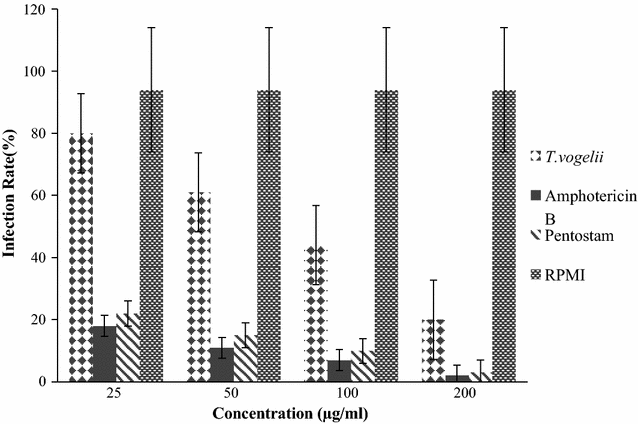

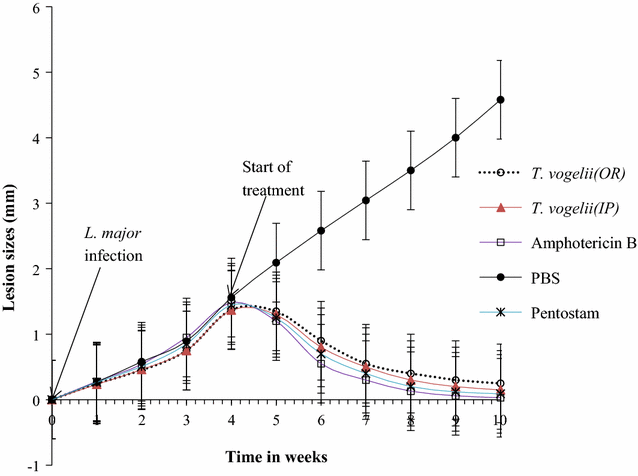
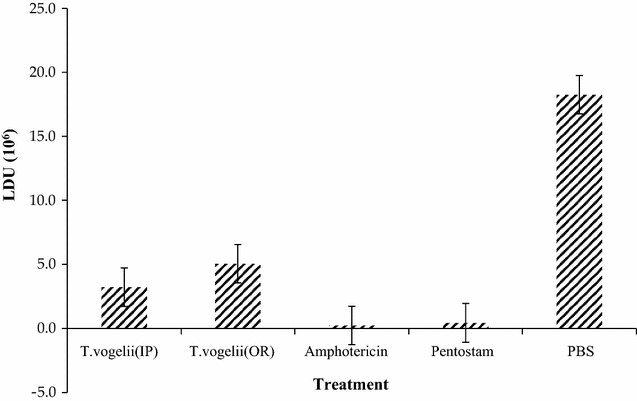
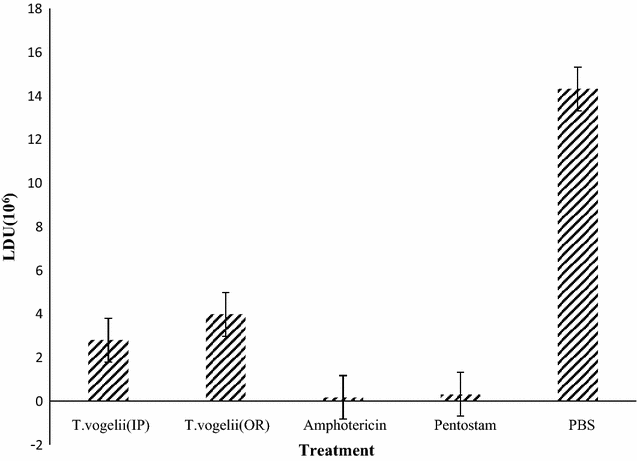
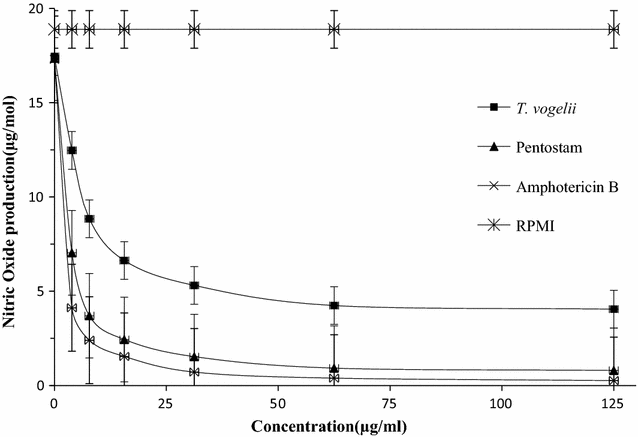
References
-
- Organization WH. Global tuberculosis control: WHO report 2010. World Health Organization; 2010.
-
- Monzote L. Current treatment of leishmaniasis: a review. Open Antimicrob Agents J. 2009;1:1. doi: 10.2174/1876518100901010001. - DOI
-
- Organization WH. WHO traditional medicine strategy 2002–2005; 2002.
Publication types
MeSH terms
Substances
LinkOut - more resources
Full Text Sources
Other Literature Sources

